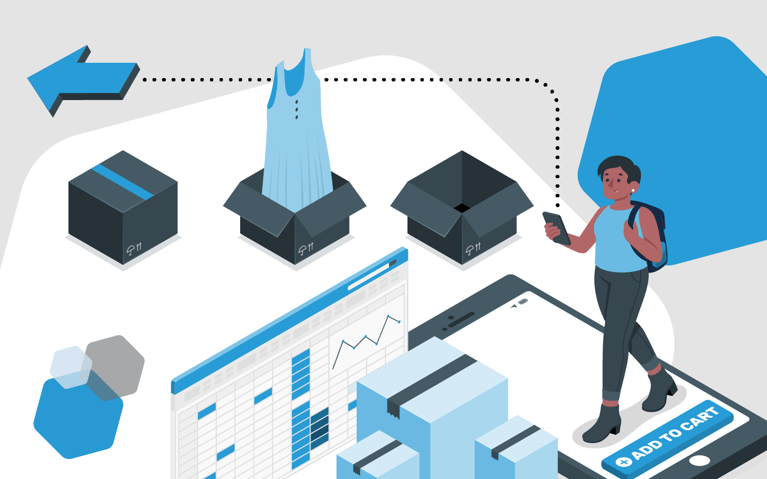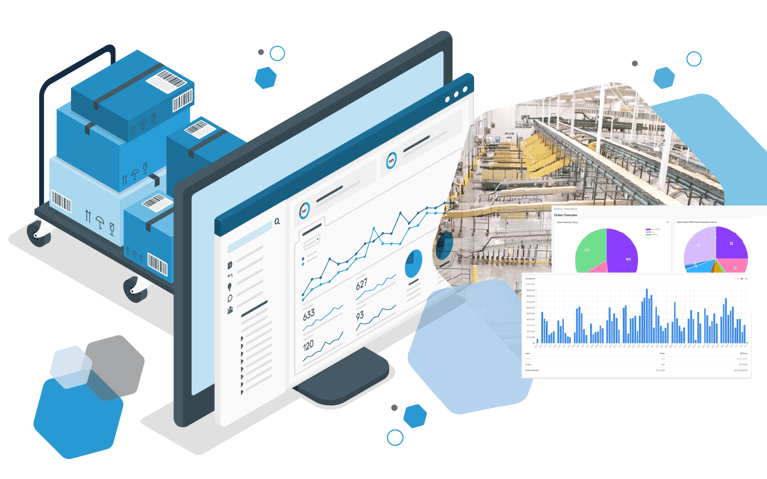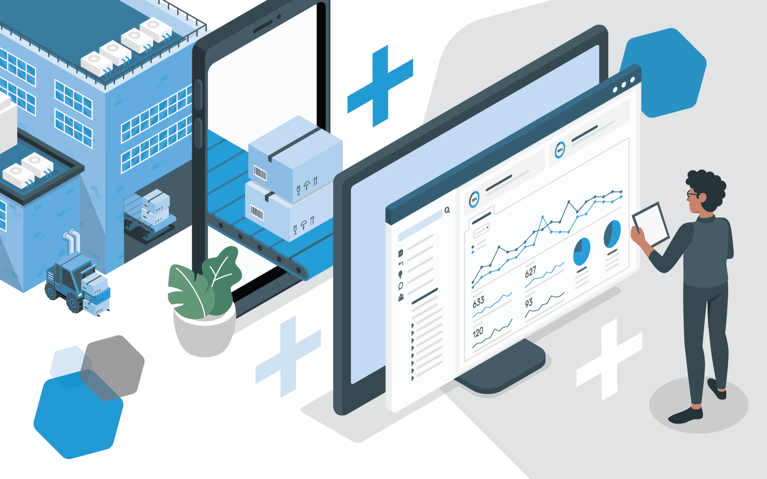Are you lost when it comes to understanding warehouse and order management systems? It can be confusing to understand the differences between order and warehouse management system benefits. Overall, these systems serve as the backbone of your business, streamlining inventory management, order processing, and customer satisfaction. Read on to learn some of the aspects you might want to consider when making this decision.
1. Understanding the difference: WMS vs. OMS
What are the differences between a Warehouse Management System (WMS) and an Order Management System (OMS)?
For starters, a WMS is primarily focused on managing physical inventory within a warehouse. It optimizes inventory tracking, picking, packing, and shipping. A WMS is crucial for any merchant but invaluable for businesses with large inventory, robust SKU base, and multi-node fulfillment operations.
An OMS, on the other hand, prioritizes customer-centric operations. It is responsible for processing customer orders, managing order fulfillment, and providing a smooth shopping experience. An OMS is vital for businesses with multiple sales channels and a diverse product catalog.
2. Assessing your business needs
The first step in selecting the right system is an assessment of your specific business needs.
What are your business goals?
Determine whether you aim to streamline warehouse operations, improve order accuracy, expand into new markets, or achieve other objectives.
What is the size and nature of your inventory?
Recognize that different systems cater to various types of products and storage requirements.
How many sales channels do you operate?
If your business spans ecommerce, brick-and-mortar stores, and third-party marketplaces, an OMS may be more suitable.
Do you have global ambitions?
If your business operates in multiple countries, international shipping and compliance may be a significant concern.
3. Functionality of WMS and OMS
A WMS offers a range of functionalities that relate to warehouse operations. First and foremost, it provides real-time inventory management capabilities, allowing businesses to track inventory levels with precision. This includes monitoring product quantities, their respective locations within the warehouse, and unique Stock Keeping Units (SKUs). WMS systems excel in optimizing order fulfillment processes. They facilitate efficient order picking, packing, and shipping, streamlining warehouse workflows and enhancing overall productivity.
WMS systems also contribute to inventory optimization by minimizing carrying costs, reducing instances of stockouts, and preventing overstock situations. Lastly, they offer robust reporting and analytics tools, granting access to data-driven insights that enable better decision-making across the organization.
An OMS focuses on elevating the customer experience and ensuring smooth order processing. One of its core functions is multi-channel order management, which centralizes the processing of orders from various sales channels. This centralized approach improves order accuracy and consistency in fulfilling customer requests.
OMS systems also play a huge role in enhancing the customer experience. They create seamless shopping experiences by providing features such as order tracking and facilitating communication with customers. Lastly, OMS systems excel in returns management, efficiently processing returns and refunds, ultimately enhancing customer satisfaction and loyalty.
4. Integration capabilities
Your selected system should seamlessly integrate with your existing software stack, such as your ecommerce platform, ERP, and accounting software. Integration eliminates manual data entry and reduces errors by automating data transfer between systems.
Integration also means that all members of your team should have access to the most up-to-date information. In this way, business processes can be streamlined. Your selected management system should offer API capabilities and be able to integrate with the tools you already use. You can usually find this information available online.
5. Scalability and future growth
Have you considered the long-term scalability of your chosen system? Your business is likely to grow, and your WMS or OMS should grow with you. Look for systems that allow you to add or remove features as needed. This way, you can adapt to changing business requirements.
Cloud-Based Solutions
Cloud-based systems are often more scalable and cost-effective, as they can be easily adjusted to accommodate increased volumes or additional sales channels.
6. Security and compliance
Protecting your company data and ensuring compliance with industry standards and regulations is non-negotiable! Investing in security measures protects your sensitive data, such as customer information and financial records. You’ll need to make sure it’s encrypted both in transit and at rest. Periodic security audits and assessments can help identify vulnerabilities and ensure ongoing compliance.
7. Measuring success and continuous improvement
Selecting the right WMS or OMS system is just the beginning of the process. To build long-term success, establish key performance indicators (KPIs) and regularly measure your system's performance against them. Some common KPIs might be order accuracy, inventory turnover, customer satisfaction, or growth metrics.
Making the right choice
Choosing the right WMS/OMS system is a decision that requires careful consideration of your business needs, functionality requirements, and how your business will shift over time. Following these guidelines will help make informed choices that propel your ecommerce business ahead of the competition. Working with an experienced 3PL provider that has their own proprietary WMS/OMS (like Cart.com) will allow for better order and inventory management, quicker onboarding, and continuous system management so your brand can focus on what matters most - crafting an extraordinary customer experience, with every order.
Subscribe to our emails for the latest industry insights!
By entering your email, you agree to receive marketing emails from Cart.com






